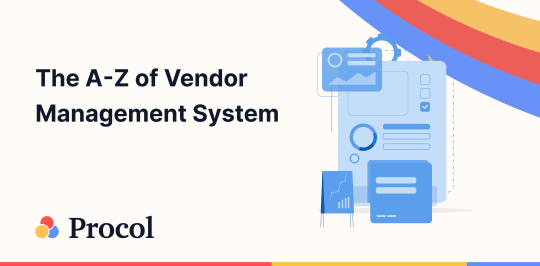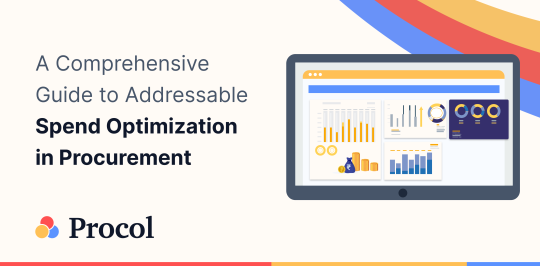eAuctions in India: The story of efficiency and speed

TABLE OF CONTENTS
- Evolution and Adoption of eAuction in India
- What is the concept of e-auction?
- Types of eAuctions
- What is the difference between traditional auction and e auction?
- What are the benefits of online auctions?
- How do you conduct an e auction?
- Best practices for conducting eAuctions: The Procol way
- What is the meaning of online auction?
- What is an e auction in procurement?
- How does an e auction work?
- What is the difference between e tendering and e-auction?
- What is e-auction India?
- Is auction legal in India?
Online transactions have taken over our world, from buying everyday grocery items to our favourite gadgets, sometimes even bidding on a vintage collective - we are surrounded by the ease of digital platforms.
If we extend this convenience and efficiency to businesses and government agencies, wouldn’t we be fostering fair trade practices in the evolving Indian landscape?
Consider two manufacturing companies facing the challenge of procuring raw materials efficiently. The first organisation takes a traditional route and negotiates with unknown suppliers through lengthy and opaque processes to meet their requirements.
The second organisation, having embraced technology to streamline their processes, uses a government sanctioned e auction website to procure raw materials. They follow the trusted route of trust and transparency, without having to worry about any legal implications.
Now, which organisation, do you think, is forging a path towards a sustainable, efficient, and ethical procurement?
The first company puts their trust in a system riddled with challenges. It exposes them to risks such as unreliable suppliers and potential legal repercussions, which could stem from non-compliance with industry regulations. This method lacks the clarity and accountability that modern businesses require.
The second company, by embracing e auction sites, not only streamlines its procurement process but also contributes to the larger goal of fostering responsible, sustainable, and fair trade practices in the ever-evolving Indian business landscape. It fosters a competitive environment where suppliers are motivated to put their best foot forward. A testament to the transformative power of e auctions.
From everyday purchases to complex business dealings, the digital transformation is taking over every arena. eAuctions are the next step in business evolution, a solution to combat the challenges of traditional processes. E auctions are the digital revolution that India has been waiting for.
Evolution and Adoption of eAuction in India
The past few years have seen a significant push from leadership teams of various industries to introduce technological advancements to the manual and time consuming processes of procurement. However, the transition is slow to come by because of the many challenges and complexities embedded in the procurement process. It demands significant resources, customizations, and flexibility.
About a decade ago, eAuction websites and platforms emerged in India, but they struggled to gain traction. Given the suspicious nature of procurement practices in India, these eAuction sites couldn’t win the trust of companies.
However, as the winds of change started impacting other industries, early adopters gave e auction websites a chance and witnessed substantial benefits: a streamlined supply chain, a centralised system, and cost-effectiveness. The benefits of eAuctions, such as finding better prices and potential cost savings, outweighed the traditional practices.
The governments of Andhra Pradesh and Karnataka played a pivotal role in shaping the space for eAuctions in India. As part of the digital India campaign, the government launched two dedicated procurement platforms. The role of e auction platforms in combating corruption and nepotism became the talk of the town.
In December 2019, the finance minister launched an e-Auction platform for assets attached by banks with the aim of putting an end to information asymmetry. By 2020, eNAM, a procurement platform launched by the government, had facilitated the trade of a whopping 3.39 crore MT and 37 lakh numbers (bamboo & coconut), collectively valued at approximately Rs 1 lakh crore. The aim of the platform was also to mark a turning point in the agriculture sector and bring transparency for farmers.
While there are still many companies that are reluctant to trust e auction websites and platforms in India because of various myths and reasons, the penetration of government initiatives has definitely built a strong case for e auctions in India. The benefits of e auction platforms cannot be overlooked.
What is the concept of e-auction?
An e-auction is a transparent business transaction between sellers and buyers on a digital platform. eAuctions are open to businesses of all sizes and can take place between B2Bs (business to business), B2Cs (business to consumer), or even C2C (consumer to consumer). E auction websites facilitate a competitive and secure digital environment for suppliers to bid against each other for contacts listed on them.
Types of eAuctions
There are six types of eAuctions:
Classic reverse e-auction:
Essentially used for procurement, in the classic reverse eAuction, a buyer requests a good or service and multiple sellers respond by placing bids for the price at which they wish to sell their goods or services. The buyer selects the most suitable bid and seller, often the one with the lowest price. Great for buyers as it empowers them with choice.
English e-auction:
This is a simple straightforward bidding war where the seller sets a bid, and buyers bid on the item (good or service) within a set time limit. The highest bidder wins.
Dutch e-auction:
Opposite to the English auction, the Dutch auction follows a descending pattern where the prices begin high and gradually decrease until a buyer jumps in at the right moment and accepts the price. The first person to buy at the highest price wins the auction.
Japanese e-auction:
This starts with a high price and gradually decreases over time by pre-defined amounts and time limits. For example, the price will decrease by Rs. 500 after every 2 hours. Buyers need to decide when to make the move.
Sealed bid e-auction:
In sealed bid eauctions, all bids are submitted confidentially, and the highest bid wins at the end of the e auction period. This format is especially useful when discretion is paramount. It prevents bidders from getting influenced by other factors, thus maintaining the integrity of the eauction process.
Weighted or multi attribute e-auction:
Weighted or multi-attribute eauctions gauge more than just the price as a deciding factor. Sellers are evaluated on various attributes and criteria, such as quality, delivery timelines, service levels, etc. Buyers assign a specific percentage or weight to each attribute. This ensures that buyers receive the best value overall, not just in terms of price.
What is the difference between traditional auction and e auction?
Traditional auctions pose a series of challenges that eAuctions solve for. Traditional auctions are time-consuming, inefficient, have limited participation, lack transparency, and result in increased costs.
If you are still wondering whether to choose between traditional auctions and e auctions, here are the differences:
| Traditional Auction | E Auction | |
|---|---|---|
| Mode, Flexibility, & Convenience | Buyers and suppliers need to be physically present in a room, adhering to set timelines, making it inconvenient | Virtual eAuction sites and platforms available at the click of your fingertips offer the flexibility of time and convenience |
| Accessibility & Reach | Limited reach, local events. Only local buyers and suppliers participate. | Global reach, transcending boundaries. Buyers and suppliers across the world can access. |
| Speed & Efficiency | Slow, manual, time-consuming process involving a lot of redundant paperwork | Accelerated and streamlined processes at a centralised eAuction platform with documented bids |
| Transparency | Lacks fairness and transparency, often propagates in nepotism and corruption | Transparency is embedded in eAuction platforms, ensuring fairness |
| Cost Considerations | High logistics costs | Cost effective |
What are the benefits of online auctions?
The benefits of e auctions for buyers are:
Cost savings and increased efficiency
In the business world, time and efficiency are money. eAuctions save time by streamlining the procurement process and making it faster and more efficient. Buyers need not drown in paperwork, going through endless supplier proposals. eAuctions introduce speed and efficiency in the process while also enabling quick decision-making.
Access to suppliers
The best part about e auction websites is their reach. As a buyer, you are not limited to a local pool of suppliers. eAuction platforms open doors to a plethora of suppliers, ensuring you find your perfect match. Having access to global suppliers at your fingertips is nothing short of a miracle.
Transparency and fairness
Every bid is out in the open. With e auction websites, there is an increased sense of trust and fairness. The elimination of middlemen enhances transparency as suppliers compete directly with each other.
Procurement process simplification and standardisation
Automation reduces human intervention, making the procurement process more streamlined, consistent, and seamless. eAuctions benefit buyers by bringing a standardised approach to procurement.
The benefits of eAuctions for suppliers are:
Transparency and cost efficiency
The reduced costs associated with streamlined processes, automated bidding, and minimised paperwork mean suppliers can focus on delivering quality. Knowing where you stand in the bidding process can help suppliers better plan their business.
Expand market reach
Breaking into new markets can be challenging, but eAuctions open doors for suppliers ensuring that they are no longer confined to geographical boundaries.
Fair competition
You can trust e auction websites to give every supplier a fair chance. E auction platforms level the playing field, ensuring that even smaller players can compete on an equal footing with industry giants.
How do you conduct an e auction?
Conducting an E-auction may sound complex, but we’ve broken down the steps and best practices for you to make it easy to navigate:
Decoding Demand
Knowing market dynamics is key to conducting a successful e auction. Take note of ongoing deals, market trends (is it a buyer’s or seller’s market?), demand for your goods or services, and understand the pulse of your target audience.
Clear Communication
Clearly define your requirements, and let your potential bidders or sellers in on the finer details, terms and conditions, delivery and payment timelines, etc.
Market Warm-Up
Pre-bidding gives you a chance to test the waters before diving all in. If you are new to the process or your items and services are, pre-bidding helps you gauge the market response and help you fine-tune your e auction strategy.
Choosing the Perfect eAuction Partner
The perfect partner can make or break your e auction. Ensure that you are comfortable using the eAuction website or platform and that it has all the features you need. Look for a tool that offers not just technological support but also simplifies the user experience.
E Auctions with Intent
Plan an e auction with an intent of awarding the business to the winner. Respect the process and don’t use it to get the best price from the market and eventually award it to someone outside the eAuction system.
Best practices for conducting eAuctions: The Procol way
Procol is an all-in-one e auction, e-bidding, and e-tendering software that’s changing the game in India’s procurement landscape. Boasting of a track record of over 1 lakh tenders and auctions and over 100 satisfied clients. Procol is the harbinger of efficiency and security in the world of e-auctions.
Lightning-fast onboarding with mobile apps
Time is of the essence, and Procol understands that. With mobile apps designed for suppliers, onboarding is a breeze. In less than 24 hours, you can go from signing up to actively participating in eAuctions.
Seamless bidding
eAuctions can look complicated from a distance, but Procol’s user-friendly e auction platform ensures each step of the process is streamlined and simple.
Algorithms that drive success
Procol’s e auction software is armed with 45 unique and advanced algorithms that are designed to generate maximum savings and outstanding results.
Templates: Ready, Set, Go!
Procol’s inbuilt templates are flexible and customizable to suit your unique needs. Whether you are auctioning raw materials, services, or any other category of goods, Procol’s got you covered.
Transparency and Visibility
Procol guarantees 100% visibility into eAuctions through your web dashboard or mobile app. Procol’s e auction software is designed with an aim to promote transparency,
Smarter Decisions with Customised Reporting
Knowledge is power, especially in procurement. Procol’s real-time reporting and intelligent insights drive smarter decisions, backed by data, and propel your procurement strategy forward.
Streamline your procurement process, maximise savings, and embrace the future of e-auctions with Procol.
What is the meaning of online auction?
An online auction, commonly known as e auction, refers to a digital platform where buyers and sellers engage in transparent, competitive bidding for goods or services. This virtual marketplace replaces traditional in-person auctions, fostering efficiency and accessibility. eAuctions are a part of the digital revolution and leverage the power of the internet to create a dynamic and global marketplace where transactions happen in real-time, revolutionising the way goods and services are bought and sold.
What is an e auction in procurement?
In procurement, e auction is a method of obtaining goods or services through online bidding. It streamlines the procurement process, allowing buyers to interact with suppliers in a transparent and competitive digital environment. eAuctions in procurement promote cost efficiency, transparency, and fair competition. E auction websites and platforms help solicit bids, evaluate offers, and ultimately award contracts to the most competitive and qualified suppliers, enhancing the overall efficiency of the procurement lifecycle.
How does an e auction work?
eAuctions operate through specialised e auction websites or platforms where sellers list their items, and buyers place competitive bids. The bidding process is typically time-limited, encouraging participants to submit their best offers. The highest bid wins the item or contract. eAuctions are versatile and can accommodate various formats and types. Thus, they are becoming the preferred way to conduct eAuctions.
What is the difference between e tendering and e-auction?
While e-tendering focuses on the submission of proposals and bids for procurement, e-auction specifically involves competitive bidding for goods or services. E tendering takes place before the negotiation phase, while e auction determines the most competitive price through bidding. Both these digital methods promote transparency and efficiency in the procurement process.
What is e-auction India?
E auction India is a digital platform where businesses, government entities, and individuals engage in transparent bidding processes to procure or sell goods and services. This platform adheres to legal standards and provides a safe and secure environment for participants to conduct business transactions. It removes barriers of geography, accessibility, and reach, and is the right step by the government towards a digital revolution, significantly contributing to the growth of India’s digital economy.
Is auction legal in India?
Auctions are legal in India and are governed by various laws and regulations. eAuctions, conducted through authorised platforms, comply with legal standards and ensure fair trade practices. These platforms provide a safe, secure, and transparent environment for both buyers and sellers to participate in legitimate business transactions.
Get a Free Demo
We'd love to hear from you. Please fill out this form to schedule a demo with us. You can also give a call on +91 76666 82222



